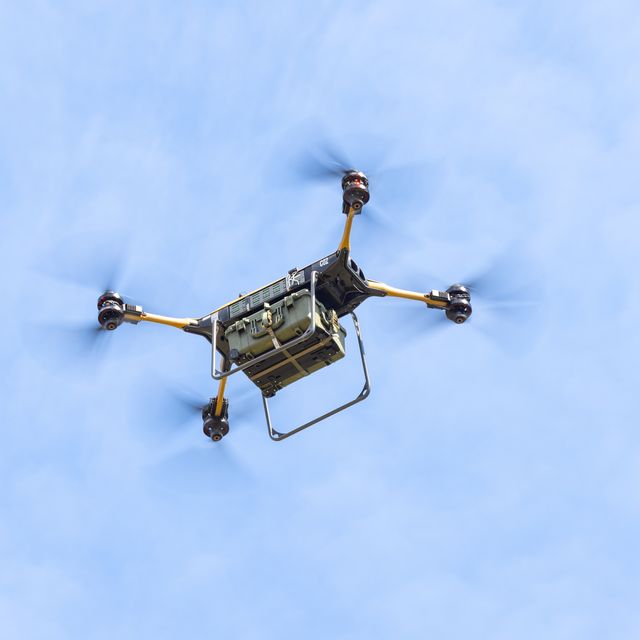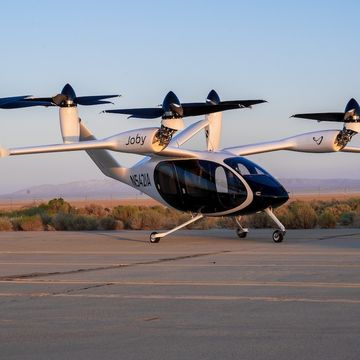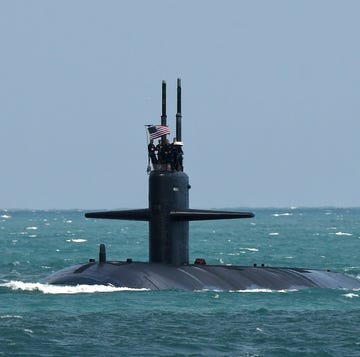The Marines will soon have a way of sending food, water, ammo, and other supplies to units miles apart—all without putting a single vehicle on a road. These new airborne delivery drones, called Tactical Resupply Unmanned Aircraft Systems (TRUAS), can lift up to 150 pounds of cargo and fly it as far as nine miles, avoiding enemy forces and even dropping the supplies from midair if necessary.
And that might just be the start. The Marines plan to scale up these efforts to eventually carry heavier supplies nearly 200 miles.
The Marine Corps, according to Defense News, is including 41 of the drones in its 2024 budget request. The drones have a unit cost of about $325,000 each, with a total program cost (including test vehicles already purchased) of around $13 million. Most if not all of the drones are likely headed to the three Marine Littoral Regiments that the Marines are standing up, units designed to fight across island chains in the Pacific.
The TRUAS drone shown here looks like a big, sand-colored beetle and is transported in a plastic Hardigg case, with the four rotors folded inward to create a more compact profile. The drone weighs 120 pounds, battery included, and can be readied for flight by a ground crew of two in less than 10 minutes.
TRUAS is controlled via a tablet that uploads navigation data to the drone. The operator can set up a geofence to keep the drone in or out of a designated area, and set waypoints for the drone to fly en route to its destination. (The operator can also program the drone to fly at a set altitude.) Finally, the drone can land and release its cargo or drop it from midair, with the drop altitude set by the operator.
Here’s a video of the TRV used in late April at the Balikatan 2023 exercises in the Philippines.
The TRUAS quadcopter fits a role the Marines call Small Unmanned Logistics System Air, or Small ULS-A. The Marines describe it as a way to keep teams and platoons fully supplied in the field. In terms of numbers, one drone would be tending to the needs of 100 to 200 troops across a relatively small battlefield.
Of course, it likely wouldn’t stop there if it deems useful. The Corps is also looking at bigger versions of the drones, Medium ULS-A, drones that can carry 300 to 600 pounds with a range of 25 to 100 nautical miles. That in turn will be followed by the even larger Light Utility Transformative Vertical Lift (TVL) with a payload of 1,000 to 3,000 pounds and a range of at least 186 miles. (The distance is likely set by the Missile Technology Control Regime, an international agreement that limits the maximum range for missiles with payloads of up to 1,100 pounds—which a drone arguably is—at 186 miles.)
The first TRUAS drone will be useful to small units, but the real progress will be in fielding the larger drones. The range will allow drones to hop from one area to another, which in turn will allow the Marines to spread out, covering more ground while scattering to avoid attacks by long range, precision guided weapons.













